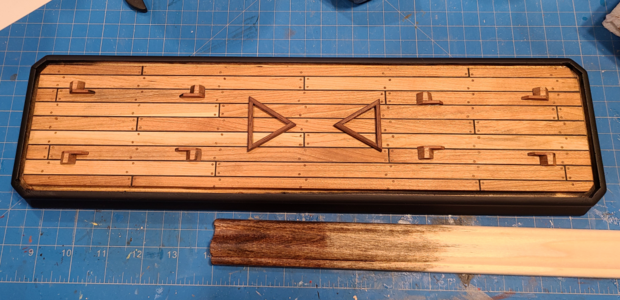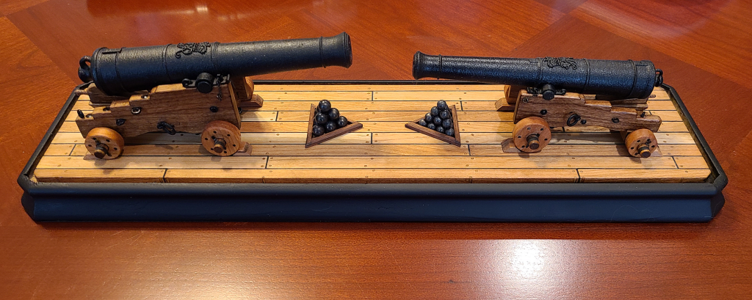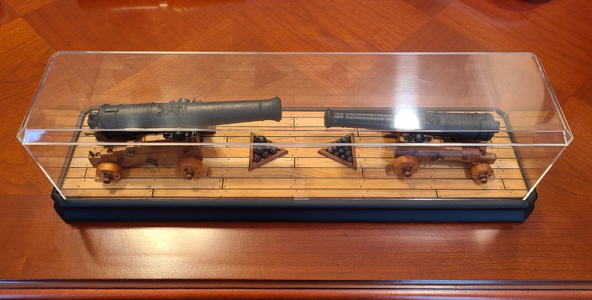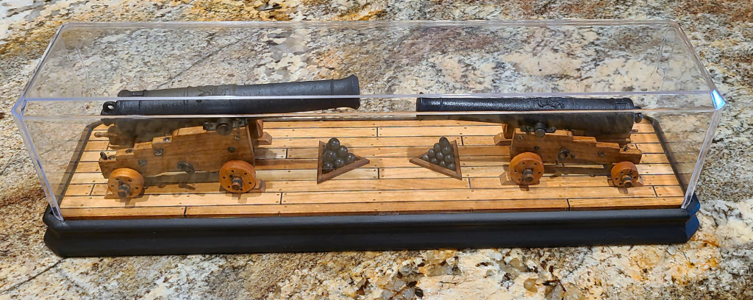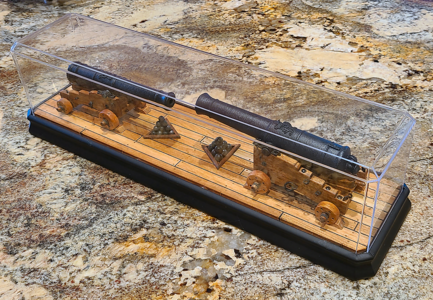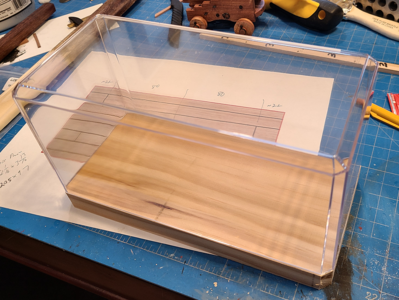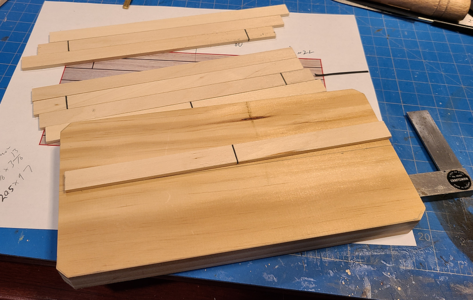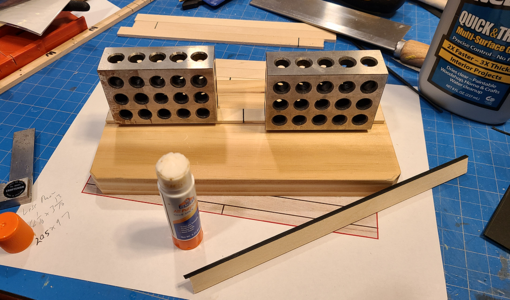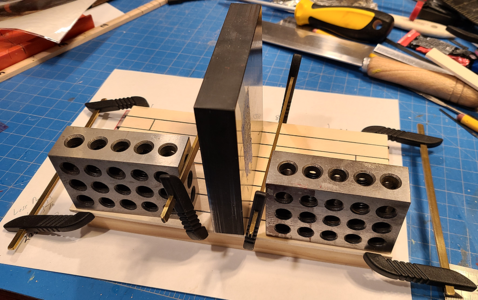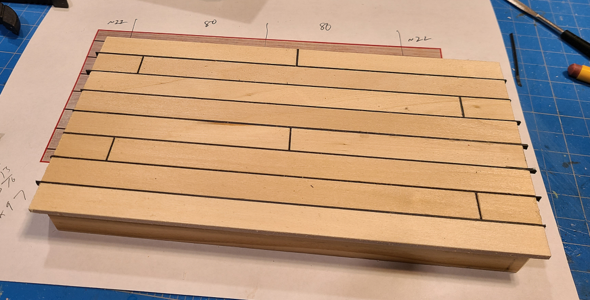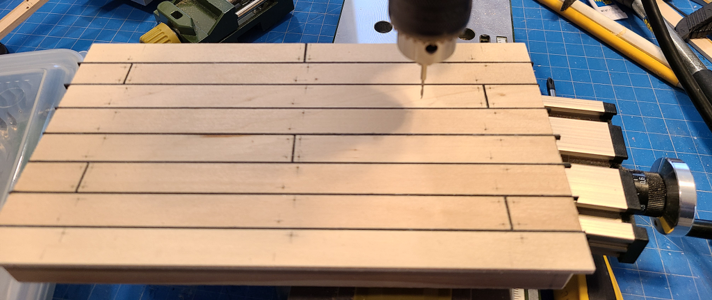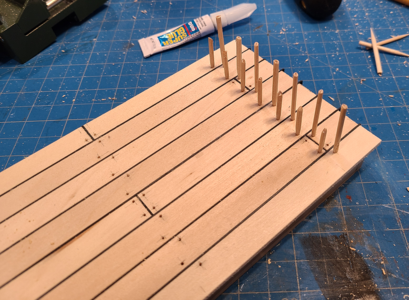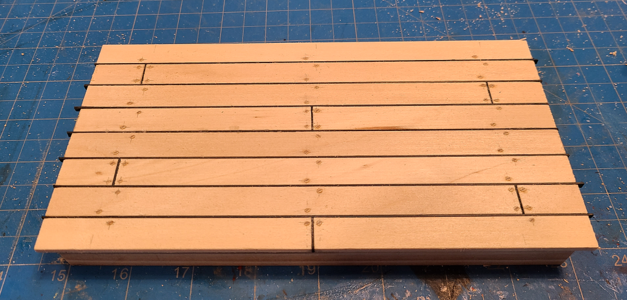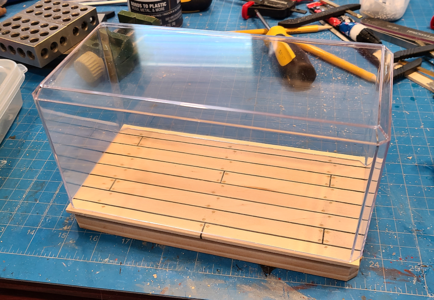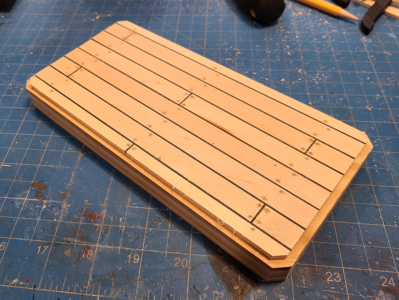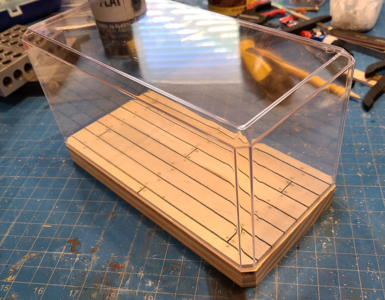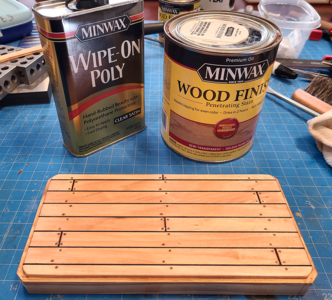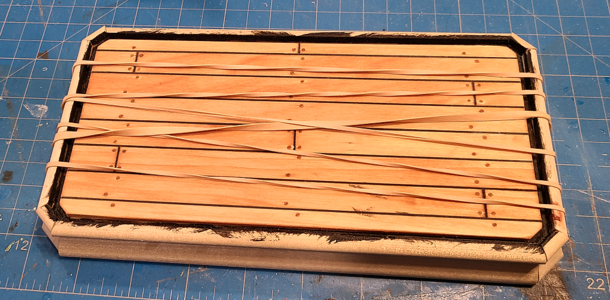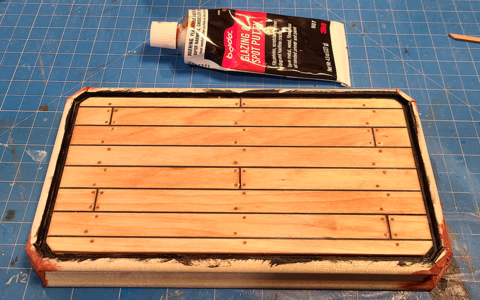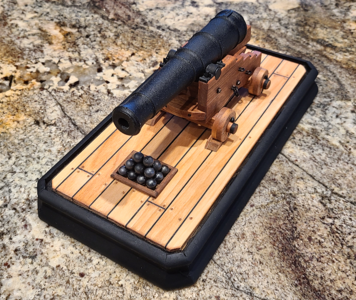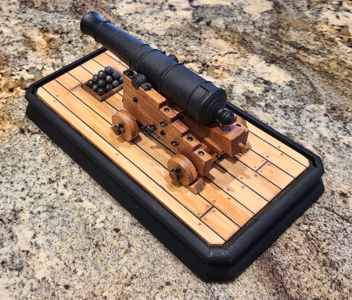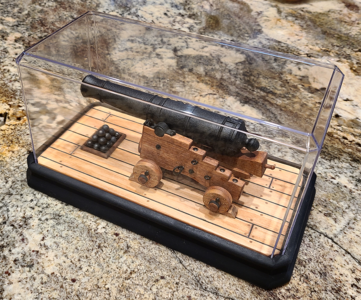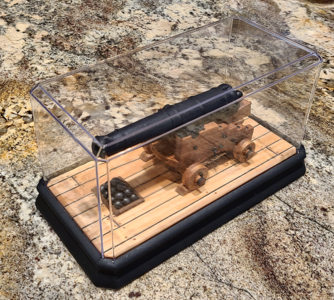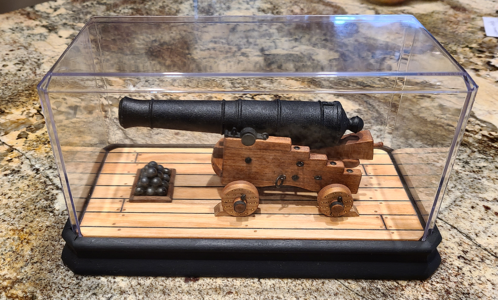I've stained the chocks and am still considering them. In the meantime, I thought I'd work on the cannonball pyramids. The balls kept rolling around on my worktop, so I used tape, taped in place with the sticky side up, to hold them as well as the wood strips in place:
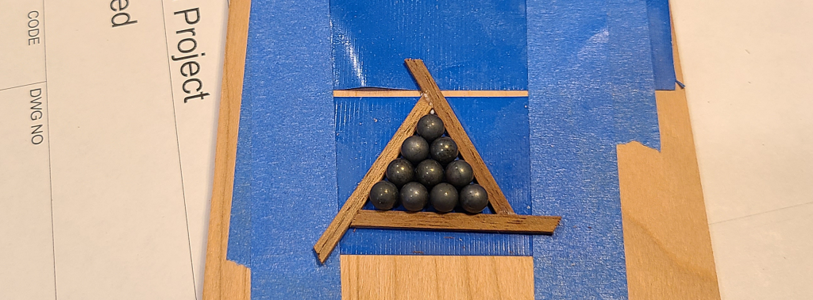
While the norm appears to be to cut the corners at 30 degrees and have them meet in a point, I found it easier to go with 60 degrees. In that way I can cut one end of each piece at the right angle, and adjust the length as needed to fit closely against the balls.
I then added similar pieces, but with the joints going the other direction, over top of the triangles. I needed the height, this way is naturally stronger, and mostly no joint goes through both pieces, so the joint is very strong:

After drying, the excess was sanded off, and a small bevel was sanded at the top. Two were made up, one for the 12-pounder cannonballs simulated by 6mm balls, and the other for the 32-pounder cannonballs simulated by 8mm balls. That worked out to about 6% oversize for the 12s and less than 2% for the 32s, so close enough.
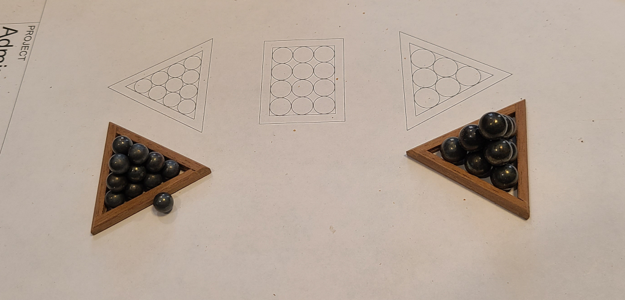
The ball bearing assortment I bought included 20 of the 6 and 7mm balls, but only 10 of the 8mm balls. So that determined the height of my pyramids. I'll glue the balls in place after I locate the triangles on the deck. My trembling fingers along with slight variations made it impossible to mount the top ball in my test of the 12-pounders. Hopefully they will all stay in place once glued. ;-)

While the norm appears to be to cut the corners at 30 degrees and have them meet in a point, I found it easier to go with 60 degrees. In that way I can cut one end of each piece at the right angle, and adjust the length as needed to fit closely against the balls.
I then added similar pieces, but with the joints going the other direction, over top of the triangles. I needed the height, this way is naturally stronger, and mostly no joint goes through both pieces, so the joint is very strong:

After drying, the excess was sanded off, and a small bevel was sanded at the top. Two were made up, one for the 12-pounder cannonballs simulated by 6mm balls, and the other for the 32-pounder cannonballs simulated by 8mm balls. That worked out to about 6% oversize for the 12s and less than 2% for the 32s, so close enough.

The ball bearing assortment I bought included 20 of the 6 and 7mm balls, but only 10 of the 8mm balls. So that determined the height of my pyramids. I'll glue the balls in place after I locate the triangles on the deck. My trembling fingers along with slight variations made it impossible to mount the top ball in my test of the 12-pounders. Hopefully they will all stay in place once glued. ;-)





